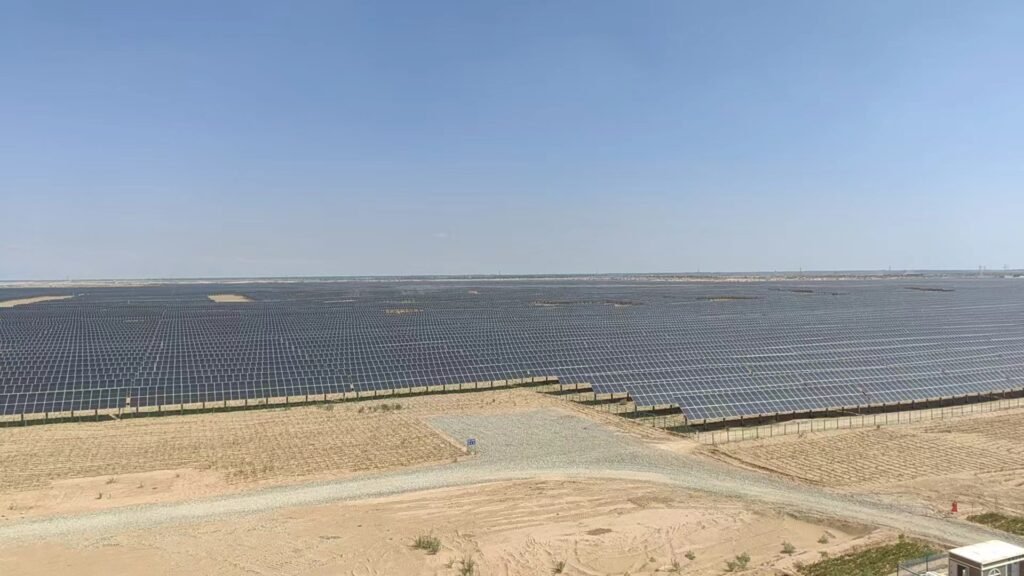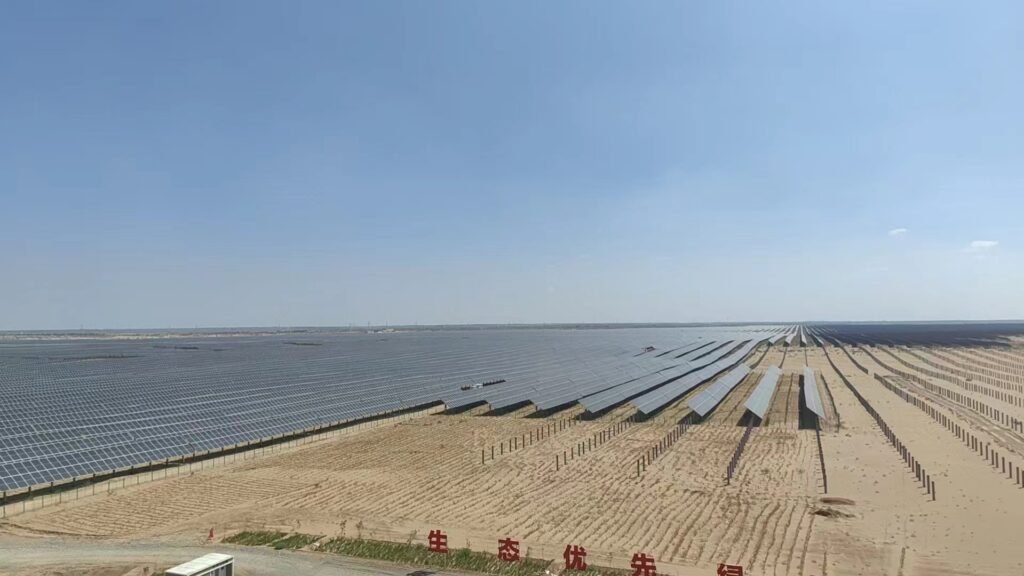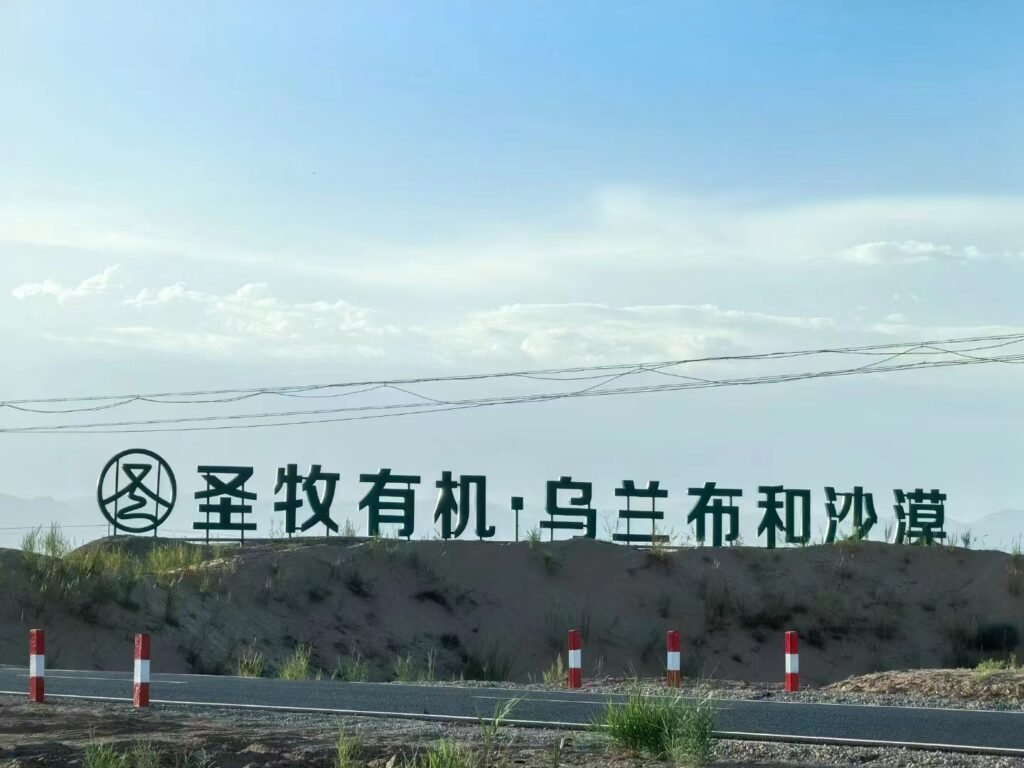
Desert control in Dengkou County began in the 1950s. For decades, aerial seeding and other methods have been used to control sand for the sake of sand control, but the results are not ideal. In 2012, the State Power Investment Group Beijing Electric Power Co., Ltd. combined the advantages of solar energy abundance in Dengkou County and innovatively proposed the concept of “photovoltaic desertification control and ecological restoration”. In 2013, it signed a cooperative development agreement with the local government on the photovoltaic desertification control project. The agreement will be implemented by Inner Mongolia New Energy Company, a subsidiary of Beijing Company.
The project started construction on October 18, 2014, and the 50,000-kilowatt photovoltaic power station was built in just 73 days. This project is Beijing’s first photovoltaic project combined with agricultural desertification control. The total investment is about 400 million yuan, covering an area of about 1,700 acres, and the annual power generation is about 87.82 million kilowatt hours. The project has significant environmental benefits, saving about 30,000 tons of standard coal every year and reducing carbon dioxide emissions by about 70,000 tons. When installing photovoltaic panels in Dengkou, you must always pay attention to weather conditions and take necessary protective measures. The environment at that time was very harsh. As soon as we entered the construction site, we were covered in dust, and we often encountered vehicles and equipment sinking into the sand. Despite this, the builders who faced the difficulties still completed the task successfully.

However, the natural conditions of the Ulan Buh Desert are poor, afforestation investment is large, management costs are high, and infrastructure construction such as energy and transportation is still relatively weak. Except for highways that pass through sand, desert roads are mainly gravel roads and dirt roads. Some enterprises cannot effectively guarantee the use of electricity. Most enterprises engaged in the sand industry are small in scale and have not formed a full industry chain layout. Their brand competitiveness is not strong. .
To make up for these shortcomings, Dengkou County vigorously promotes regional layout, large-scale land use, irrigation water conservation, business intensification and product branding. While strengthening road construction and providing power supplies, Dengkou County has innovated ideas and mechanisms in the way of investing in desert control, giving full play to the role of various departments, integrating financial support for agriculture, high-standard farmland construction, rural revitalization, social capital, Financial credit and other funds will be bundled and invested in leading enterprises and key bases in ecological management.
“After the sand industry has made a good start in the primary industries such as planting and breeding, we will seize the opportunity to implement the ‘sand industry +’ and extend it into the secondary and tertiary industries.” Chen Gongming, member of the Standing Committee of the Bayannaoer Municipal Party Committee and Secretary of the Dengkou County Party Committee, said that the sand industry is “one after another”. It not only takes the processing of sand plants and livestock products to a higher level, but also promotes the new energy industry and cultural tourism industry to achieve great development.
In order to rationally utilize the rich light resources of the Ulan Buh Desert, Dengkou County has launched a new model of “borrowing light to control desertification” since 2015, and vigorously develop green and clean energy sources such as photovoltaic power generation. It has successively introduced enterprises such as Guodian, Guohua, China Photovoltaic, Changsheng Nidian, and Renchuang Technology to build a 10,000-acre photovoltaic industrial park. It has built an installed capacity of 360 megawatts and an annual power generation of 400 million kilowatt hours. Desert tourism, represented by natural and cultural landscapes such as the Yellow River Sanshengong Water Conservancy Project, Nalin Lake, Yinshan Rock Carvings, and Agui Temple, is increasingly prosperous. In 2020, Dengkou County received a total of 798,000 tourists , the comprehensive tourism income was nearly 490 million yuan; last year, a total of 980,000 tourists were received, and the comprehensive tourism income was 654 million yuan.

Dengkou County will closely focus on achieving the “double carbon” goal and comprehensively build a 10-million-kilowatt photovoltaic base in the Ulan Buh Desert in Dengkou. According to the “photovoltaic + governance” model, vegetation growth will be used to suppress dust. By the end of the “14th Five-Year Plan” period, we will strive to complete fixed investment of 100 billion yuan, the installed capacity will reach 10 million kilowatts, the power generation after grid connection will reach 32.8 billion kilowatt hours, and the sand fixation area will be 350,000 acres. At the same time, it also deeply explores local cultural tourism resources and integrates organic milk, organic fish, cistanche deserticola, wine and other products from the desert into the tourism series, welcoming more tourists to Dengkou to visit the “Hometown of Hundreds of Lakes” and appreciate the “lonely smoke in the desert” and “Sunset over the Long River.”

